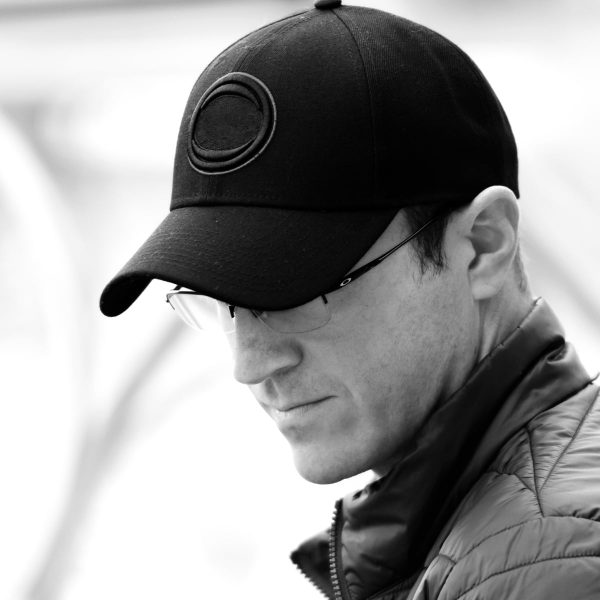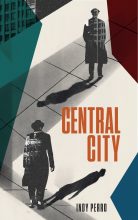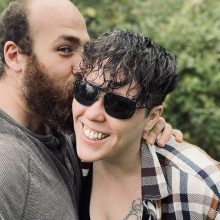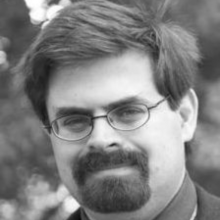Central City by Indy Perro
What led you into writing?
I’ve been writing as long as I can remember. I spent most of my youth either in the gym or the library, and during the cold, Midwestern winters of my youth, the library had longer hours than the gym.
How does a typical day look?
I wake up, walk my dog, meditate, write for a few hours, take care of other business, and then I hit the gym.
In what ways do your characters test your abilities?
Finding the right voice for a character can be difficult and often out of my control. I may need to prepare to write a certain character on a given day. If I base a voice on an actor or a radio DJ or a character in a film or play, I may need to listen to several sound bites or clips to get the voice right in my mind. I’ll also scribble a few quotes or stylistic phrasings in the character’s voice, notes I can come back to when I begin to drift.
What’s your setup?
I write on a desktop computer facing a wall, limiting distractions. I’m beginning to wonder if I’ll spend my entire life relegated to the corner.
What lasting effects have your favourite authors had on your writing and style?
I love Elmore Leonard because he set the standard for the type of fiction that most interests me: intelligent, popular fiction that blends genres. He wrote wonderful westerns, brilliant contemporary noir, and thoughtful, literary works that entertained while giving the reader questions about contemporary society, all of which allowed readers to engage ideas or simply enjoy the stories.
Dashiell Hammett, Raymond Chandler, and James M. Cain, the usual suspects, provided archetypes and created stylistic expectations for hard-boiled fiction, and George V. Higgins wrote some of the best dialogue of any crime novelist. Frederic Brown, Dorothy B. Hughes, and Jim Thompson, just to name a few, engaged existential issues posed by postmodern society, and I love the atmospheres they worked to create. Chester Himes and Jean-Patrick Manchette, different as they were to one another, wrote such immediate novels. Their prose leaps off the page and demands attention.
Cormac McCarthy, I feel, contributed more to American literature in the second half of the twentieth century than any other single author. He understood, interpreted, and captured trends and shifts that marbled our society. In hindsight, we can see how the fractured traditions and the evocation of chaos through ubiquitous commercialization left so many feeling alienated, a situation that plays perpetually across today’s news. McCarthy wasn’t the only writer or intellectual to see this in the wake of 1968, but he fictionalized it in Southern Gothic and Western contexts, both classic American genres that, as American culture yielded to academic forces, he gave a fresh pint or two of blood.
I love this question and love thinking about writers and art, and I regularly post about the authors and art that have influenced me at https://indyperro.com. Please visit me there and feel free to connect and comment.
What do you do for inspiration?
I go to art exhibitions, films, and concerts. Seeing and experiencing non-literary art helps me keep the faith and makes me feel as though I’m not alone in trying to understand and evoke the human experiences. Writing can be so solitary, and our culture has grown more alienating as it has grown more commercial. I feel inspired when I feel connected to a broader artistic community.
What repeating themes do you find yourself pulling into your stories?
Issues with family come up again and again. The idea of doubling characters through family relationships strongly appeals to me. I love how a sibling relationship or a parent/child relationship can illustrate two sides of the same coin while forcing the characters to face themselves in another.
Relationships, generally, are a recurring theme. How do people relate to one another through technology, art, and social structures? How do relationships shape individuals? How do we see ourselves within our communities? These are the questions I’m drawn to through character development, and I see characters functioning on a string, one connected to another. When one character makes a choice, that choice ripples throughout the novel, defining possibilities for all the other characters.
How do you wind down?
Physical exercise, especially running and hiking.
What sort of challenges do you regularly overcome while designing your world/setting?
Understanding how to give enough without giving too much can be a challenge. Writing well requires that we understand, at some level, how our reader is experiencing the words on the page. Seeing my proximity to the work and gauging a reasonable approximation of someone else’s relationship to the words never gets easy, at least not in my experience. The task, as I understand it, is to give enough to provide definition and then let the reader’s imagination assume responsibility. I don’t want to describe too much and lose the reader’s interest, which, in truth, means I’ve denied the reader the opportunity to engage the work.
What are you reading at the moment?
- The Grammatical Man by Jeremy Campbell
- Pimp by Iceburg Slim
- Midnight in Peking by Paul French
What’s the most useful advice you could give to an aspiring author?
Don’t look to others to authorize your work. That’s the job.
Tell us about the book you’re promoting.
Central City and Journeyman are hard-boiled mysteries.
CENTRAL CITY
Kane Kulpa learned which laws could be bent and which broken after a short stint in prison courtesy of Detective Vincent Bayonne. Bound by time, integrity, and the reality of life in Central City, Bayonne and Kane made peace with the past. Now, gang tension spirals from corrupt to deadly, and a series of murders stresses Kane and Bayonne’s uneasy alliance. Kane balances on a razor’s edge to protect his bar, power, life, and family, and Bayonne hustles to keep another lonely man from being strangled.
Central City is a city struggling for identity. The cops protect the rackets, and the criminals shelter the injured. Innocence is only an appearance, and rage finds a voice.
JOURNEYMAN
After the events of Central City, Kane Kulpa struggles to consolidate power in the underworld, and Detective Vincent Bayonne investigates the death of the mayor’s son. The mayor’s justice and Bayonne’s goals appear to coincide, but in Central City, nothing’s as simple as it seems. To keep the city from falling into chaos, Kane must acknowledge the truth about himself, and Bayonne must support Kane, even as he struggles to accept the men he and Kane have become.
👋 Hi! I run Author Interviews
As a new writer I found myself itching to contribute to a thriving, creative community, so I made Author Interviews and I've met loads of wonderful people in the process. You can buy my debut fantasy RINGLANDER: THE PATH AND THE WAY from Amazon.


 Audible
Audible


